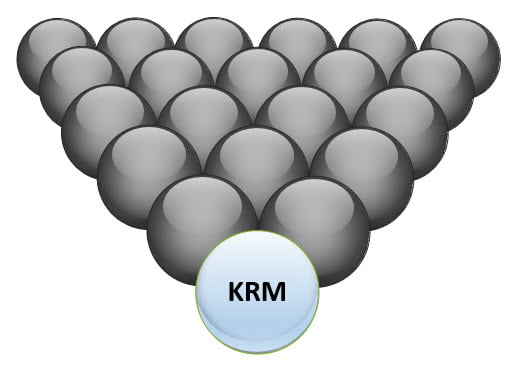Rules are only as good as the people who should apply them.
This truism is nowhere more virulent than in information management/information governance or in the organizational handling of business information. No organization can be expected to achieve management and workforce compliance with its policies and regulations unless appropriate guidance is proactively and continuously provided in an as-needed manner. Unfortunately, many companies lack a solid information competence to master the corresponding strategic and organizational challenges of digitization. It’s not just IT that should be concerned about this.
Can companies be found at all in which a continuous and sustainable legally compliant or proper information and document management functions?
Fred Diers, a well-known U.S. subject matter expert with many years of experience questions this [1]: why do so many information management programs struggle with the same problems despite their owners’ and champions’ assurances to the contrary (“We are compliant!”)?
- Missing or outdated policies and retention schedules
- Retention schedules that poorly reflect the structure and processes of business information
- Personnel who know little or nothing about existing regulations. Retention knows or thinks these apply only to paper records
- No sustainable instruction on the operational regulations and procedures with regard to the handling of business information
- Lack of understanding about necessary changes (resistance to change, no enforcement)
The sobering findings suggest that training and communication are key aspects of ensuring information management compliance (IMC). This demand is a perennial favorite and one of the 7#keys in the “Information Nation” bible [2].
The KRM is aware of this and has developed appropriate training programs and offers. These can be organized in-house or externally. It is essential that the corresponding trainings incl. Awareness education tailored to operational needs (prices on request).
Our current offer:
- various modules in the field of information governance (customer-specific)
- Seminar Information Management Strategy
- Seminar: Archiving according to GeBüV
The following basic principles apply:
- Implementation IM/IG: we follow our assumptions in the Information Governance Practice Guide (Ch. 4.2.9 Change Management) – do not underestimate culture and politics in the company, they are crucial (cf. KRM blog“Organizational Change is in Demand“).
- Sufficient or level-appropriate coordination of trainings with corporate communications
- “clarity and simplicity” of tools and processes (only as much as necessary according to the MATRIO method)
- Communicate proactively and agilely at all levels (see IG as ECO system instead of EGO system) – Focus on success in the matter at hand without hierarchical affiliation (agility) – Focus on interests instead of positions in a cross-functional collaboration (HBR)
- interactive training should be offered on various channels (eLearning synchronous and asynchronous) (intranet)
- Monitoring: give due consideration to continuous updates (regulations, laws, implications of new technology, applications, etc.)
- Involve HR and make IM compliance a priority so that information as an important factor and asset is not simply dealt with as an aside, as is often the case (integration of functions and tasks in job profiles, incorporation in annual assessment, exit procedures to avoid breaks in the custody chain, etc.).
- Diligence in the introduction and transformation to new systems: ECM user adoption [3]– difficult user acceptance for records mgmt and archive systems) – training and early communication is particularly critical here.
Communication Business – IT: this is an aspect where mostly IT has relatively little idea about business, although in many companies a bridging has taken place.
A recent finding by McKinsey is interesting here: Five questions boards should ask about IT in a digital world
“The board at one large international retail bank undertook a review and found that less than 5 percent of its IT leadership team had any business-unit experience.”
So dare to build bridges – whether business or IT – so as not to look like the picture: fingerpointing benefits no one and there are only losers.

Source: B. Wildhaber
[1] Cf. F. Diers (2016): In search of an Effective RIM or IG Program, in Information Management Magazine, ARMA, March/April , p.34-36.
[2] cf. Kahn R., Blair B. (2009): Information Nation: Seven Keys to Information Management Compliance. 2nd edition, Indianapolis, p.175ff.
3 cf. Andersen Rebekka (2008): The rhetoric of enterprise content management (ECM): Confronting the assumptions driving ECM adoption and transforming technical communication, in: Technical Communication Quarterly, 17(1), 61-87.







0 Comments